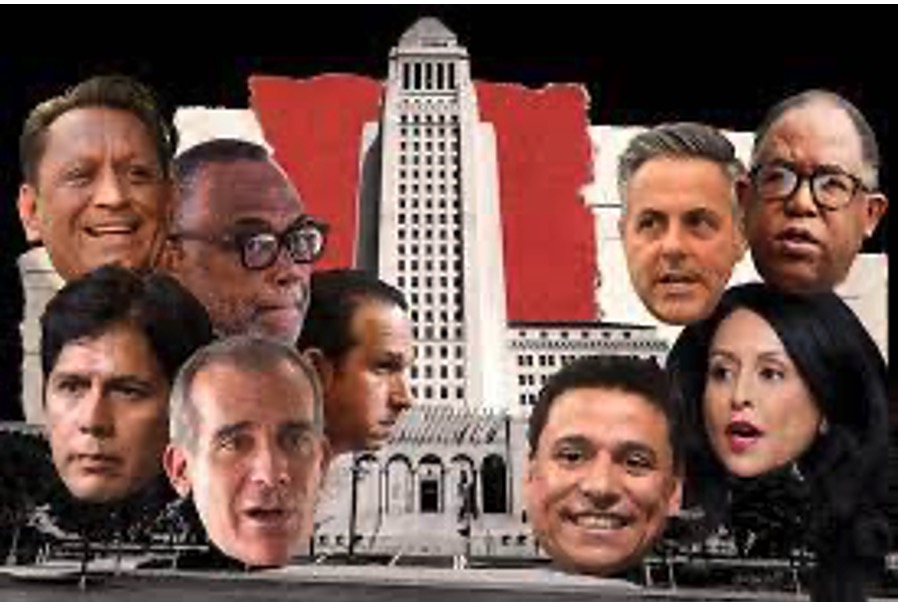Comments
PLANNING WATCH - LA’s elected officials hold office without a party affiliation. Nevertheless most of LA’s elected officials come from the Democratic Party’s corporate wing. On most issues the City Council’s three Democratic Socialists of America (DSA)-endorsed members support them. The one exception is Council District 12, in the northwest San Fernando Valley. Historically, its Councilmembers hail from the Republican Party, even though they usually vote with their crypto-Democratic colleagues.
LA’s officials go through enormous political contortions to maintain the support of constituents who are often at each other’s throats. On one hand, the officials stay in the good graces of their real estate sector donors and their lobbyists by expanding the locations where developers can build highly profitable buildings. This “business friendly” approach pervades City Hall, especially among elected officials, their staff, and departmental managers.
On the other hand, are LA’s voters. The majority (58%) identify as Democrats, 13% as Republicans, 23% as independents, and 6% with third parties, such as the Greens. Assuming that the 23% who are unaffiliated broadly resemble affiliated voters, at least 2/3 of the city’s electorate identify as Democrats or lean toward them.
While only a minority of these self-identifying Democrats are, according to the LA Times, “strong liberals,” LA’s elected officials treat them as “progressives.” They are often at odds with the officials’ campaign donors, especially those from the real estate sector. The donors want more sites where up-zoned parcels and density bonuses allow highly profitable up-scale houses and apartments. In contrast, the city’s residents want decent, affordable housing, reliable infrastructure, and well-maintained public services.
How do the city’s officials balance these contradictory interests, especially when it comes to contentious land use, planning, and zoning issues?
- Sometimes City officials opt for one-off actions, such as joining picket-lines on Labor Day, since these actions do not interfere with City Hall’s support for speculative real estate projects. Of course, the officials never mention that the rest of the world honors labor on May 1 as International Workers Day.
- Another ploy is to share information on personal preparation for emergencies, such as wildfires and earthquakes, while ignoring the City’s role in permitting construction on earthquake faults and open spaces.
- A similar let-them-eat-cake approach is promoting movies and concerts at public venues, without mentioning proper funding for the city’s Cultural Affairs Department.
In addition to these short-term gambits, there are two long-term issues that elected officials focus on to paper over the chasm between their donors and their voters.
Homelessness: Regarding land use, LA’s elected officials spin upzoning as the best way to solve a “housing shortage” that supposedly causes homelessness. What they neglect to say, however, is that their legislative efforts to deregulate LA’s zoning laws make the housing crisis worse.
- Up-zoning is already allowed in California since homeowners can add three Accessory Dwelling Units (ADUs) to their houses. But these units become extra bedrooms or market rate apartments, so they lift the cost of housing.
- Homeowners can already demolish their house and replace it with two duplexes through SB 9, another statewide California law. This, too, raises housing prices and makes the housing crisis worse.
- In L.A. the height and density of new apartment buildings can be easily increased through Transit Oriented Development density bonuses. Since LA’s Housing Department never physically inspects these apartments to confirm below market rents and occupancy by low income tenants, these de facto zone variances result in more high-end apartments, exactly what the un-housed cannot afford.
- Los Angeles has a declining population and extensive vacancies in existing apartments. There is no shortage of demand for these vacant units, just a shortage of family income among the unhoused and over-crowded to rent or buy.
LA’s City Hall’s crime wave – where was the LAPD?

Crime: Elected officials regularly hear complaints from their constituents about street crime. The officials gladly go with this flow by sweeping much more costly white collar crimes (e.g., pay-to-play) under the carpet. Instead, they support a large LAPD as the solution to crime, ignoring contradictory data, as well as City Hall’s crime wave of high-level graft and corruption. Subject to the continuous din of sirens, helicopters, and street crime stories, the City Council and Mayor have rebranded the LAPD as a public safety department, approving lavish raises and annual budget of $3.6 billion.
How long can these public relations schemes continue at City Hall? It is hard to predict, but let’s remember that sunlight is the best disinfectant.
(Dick Platkin is a retired Los Angeles city planner who reports on local planning issues for CityWatchLA. He is a board member of United Neighborhoods for Los Angeles (UN4LA). Previous columns are available at the CityWatchLA archives. Please send questions and corrections to [email protected].)






